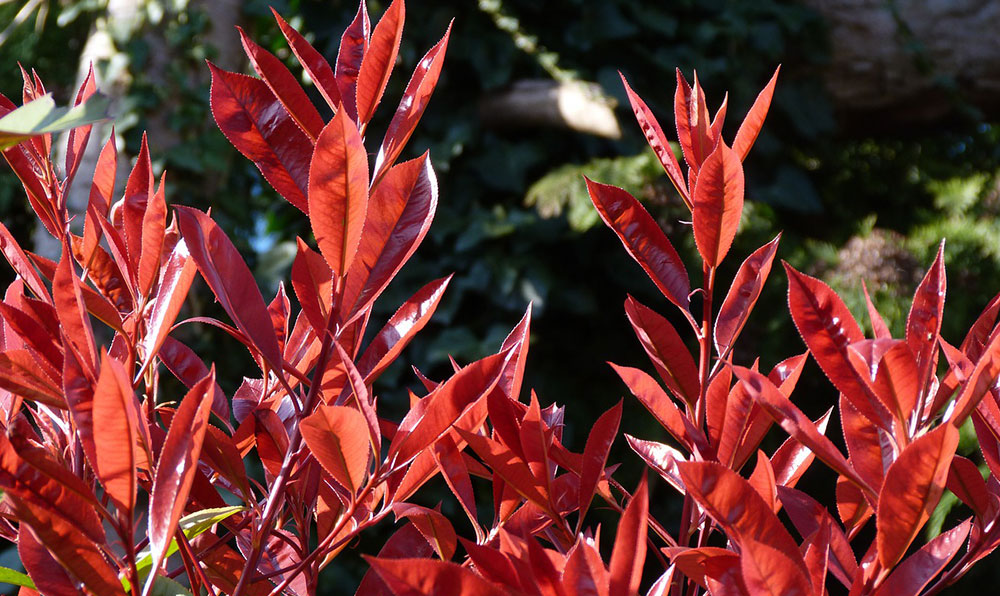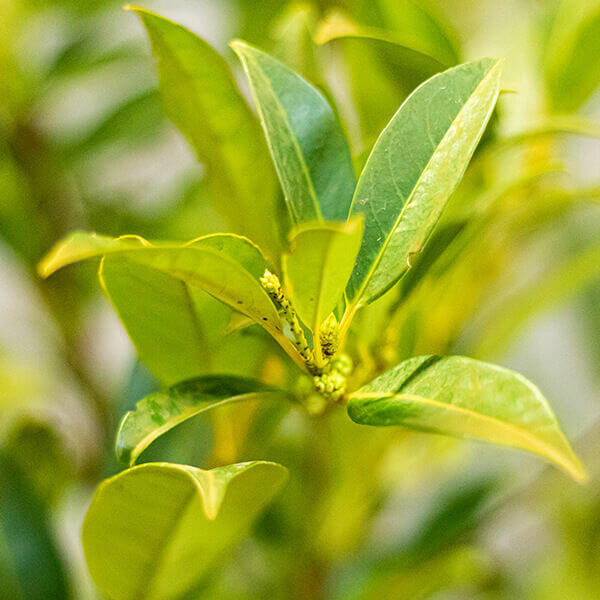Drought-tolerant Hedging Plants
Hedging Plants For Attracting Birds
Boost your garden's attraction with rich hedge ranges such as Yew (Taxus), Thuja, Laurel, Photinia, and Bamboo, celebrated for their structural stability and environmental benefits.
Yew and Thuja supply evergreen coverage and winter season resilience, while Laurel provides quick development and broad, fragrant leaves.
Photinia includes seasonal charm with its lively red foliage, and Bamboo lends a low-maintenance, peaceful atmosphere.
These hedges improve air quality, minimize sound, and create tranquil, private areas.
Correct planting, spacing, and maintenance guarantee energetic development and ecological harmony.
Check out how these lavish varieties can elevate your garden's charm and wellness.
Secret Takeaways
Change Your Garden With Lush Hedge Varieties
- Select Yew for its dense, evergreen growth and exceptional durability.
- Opt for Laurel for its fast growth and broad leaves, guaranteeing quick personal privacy.
- Pick Photinia for its lively seasonal foliage, which turns a striking dark red.
- Make use of Bamboo for a low-maintenance, winter-hardy hedge with visual appeal.
- Space plants 2-3 per meter and prune regularly for optimal growth and health.
Popular Hedge Plants
When transforming a garden with rich hedge ranges, it's important to think about popular hedge plants such as Yew, Thuja, Laurel, and Photinia due to their special attributes and advantages.
Yew (Taxus) is extremely respected for its durability and thick, green development, making it a prime option for withstanding landscapes.
Thuja is kept in mind for its evergreen foliage and robust winter durability.
Photinia adds seasonal vibrancy with red leaves that darken in time, creating dynamic visual appeal.
Laurel offers rapid development and aromatic, broad leaves, perfect for fast privacy.
Additionally, Bamboo is an exceptional option for atmosphere, using a low-maintenance, winter-hardy alternative that improves the garden's aesthetic with its elegant, swaying canes.
These choices accommodate a variety of horticultural needs and choices.
Advantages of Garden Hedges
Garden hedges provide a wide range of benefits, making them an important addition to any landscape. These natural barriers are economical to execute and provide substantial wind defense, boosting air flow and contributing to sound reduction. The thick foliage of hedges like Thuja and Beech guarantees privacy by blocking exposure, creating a tranquil and secluded environment.
Hedges likewise play a vital role in microclimate guideline, offering a stable environment that promotes plant growth and lessens temperature changes. Their intricate leaf structures filter toxins, improving air quality and adding to a healthier garden community.
Moreover, hedges master sound reduction, soaking up and deflecting sound waves to lower ambient sound levels. This double functionality of supplying both visual and acoustic personal privacy enhances the general harmony and aesthetic appeal of any garden.
Planting and Upkeep Tips
For an effective hedge, meticulous preparation of the planting location is crucial. Guarantee the soil has correct pH and drain to support strong root development.
Space the plants properly for the picked species. Water the hedge often throughout its preliminary growth phase, adjusting as required with seasonal changes.
Execute a systematic pest control and illness prevention method, utilizing organic or chemical treatments when needed. Frequently check for aphids, mites, and fungal infections.
Apply mulch to retain moisture and suppress weeds. Seasonal pruning promotes dense development and air blood circulation, necessary for plant health.
Following these guidelines will help you cultivate a vibrant, well-kept hedge that improves the charm of your garden.
Spacing and Cutting Standards
Spacing and Cutting Standards
Appropriate spacing and cutting are important for cultivating healthy, aesthetically appealing hedges. Sufficient spacing guarantees each plant gets adequate nutrients, light, and air flow.
Follow these standards for ideal hedge maintenance:
- Spacing: Position hedge plants 2-3 plants per meter to encourage robust growth.
- Pruning Techniques: Routine pruning is necessary for keeping wanted hedge height and shape. Cut brand-new growth in summer and cut back older wood throughout winter season.
- Seasonal Care: Change trimming schedules and techniques according to seasonal requirements to ensure plant health.
- Hedge Height: Frequently display and trim to maintain the desired hedge height and attain consistent aesthetic appeals.
Abiding by these steps will ensure your hedge thrives, boosting both the appeal and functionality of your garden.
Choosing the Right Hedge
Picking the Right Hedge
Choosing the appropriate hedge includes assessing factors such as fully grown height, foliage density, and ecological resilience. Effective hedge plant selection needs comprehending each species' development characteristics and site-specific flexibility.
For example, Yew (Taxus) uses outstanding longevity and thick growth, while Thuja is significant for its winter strength. Additionally, thinking about upkeep requirements is essential; fast-growing types like Laurel or Privet demand regular cutting, whereas low-maintenance options like Bamboo or Ivy might be more effective for those looking for very little maintenance.
Environmental aspects such as soil type, light schedule, and moisture conditions should likewise direct the choice process. This mindful method guarantees the selected hedges will thrive, supplying both functional and aesthetic advantages to the garden landscape.
Delivery and Planting Suggestions
To ensure your hedge plants flourish, they should be delivered by specialized couriers and planted without delay upon arrival.
Follow these important actions for effective planting:
- Soil Preparation: Enrich the soil with raw material to enhance drain and nutrient content.
- Planting Depth: Develop a trench two times the width and equivalent to the depth of the root ball.
- Watering Techniques: Water thoroughly after planting, keeping the soil regularly damp however not filled.
- Mulching: Apply a layer of mulch to retain moisture and suppress weeds.
Client Assistance and Service
Offered the essential function of prompt help in horticultural pursuits, our client assistance group is available six days a week through telephone, email, and social media to provide professional guidance and swiftly deal with any concerns. Their commitment to quick response times ensures customer complete satisfaction by fixing questions connected to plant health, optimum planting techniques, and upkeep schedules.

Telephone
Within 24 hours
This detailed support group, enhanced by a stellar 9.3/ 10 customer rating, highlights our commitment to improving the gardening experience for each customer.
Regularly Asked Concerns
The Length Of Time Does It Consider Hedge Plants to Develop?
Hedge plants usually need one to 3 years to end up being totally developed, with the precise period varying by species and growing conditions.
Efficient care during this crucial period is essential for robust growth. Constant watering, alert weed control, and proper fertilizer application are essential in promoting strong root advancement.
For example, fast-growing species like Laurel may develop quicker, while slower-growing varieties such as Yew might take longer. Diligent upkeep speeds up the facility process, resulting in healthy and thick hedges.
What Are the very best Hedge Plants for Privacy?
The question of the finest hedge plants for personal privacy involves evaluating evergreen and deciduous alternatives.
Evergreen hedges like Thuja, Laurel, and Cypress supply year-round coverage, ensuring constant personal privacy.
In contrast, deciduous hedges such as Beech use seasonal personal privacy, shedding leaves in colder months.
Secret upkeep tips for personal privacy hedges consist of regular cutting, fertilizing in spring, and appropriate spacing-- typically 2 to 3 plants per meter.
In addition, consistent watering and thorough weed removal are crucial for promoting healthy, thick growth.
Can Hedge Plants Bring In Wildlife to My Garden?
Yes, hedge plants can draw in wildlife to your garden by providing vital benefits like shelter, food, and nesting websites, therefore enhancing regional biodiversity. For example, yew, holly, and laurel are exceptional for drawing in birds, while ivy supports a range of insects.
However, it is very important to note that there are some downsides, such as increased maintenance to handle bugs and routine maintenance. Carefully picking and preserving hedge ranges can help balance these benefits and disadvantages, eventually cultivating a dynamic and sustainable ecosystem in your garden.
Are There Any Blooming Hedge Plants Available?
Yes, there are flowering hedge plants available that can enhance the appeal of your garden.
For example, here Elaeagnus, likewise understood as Olive Willow, produces aromatic white flowers in the fall, adding a touch of beauty.
Photinia, another popular choice, showcases vibrant red leaves that develop into an abundant green, developing a vibrant visual effect throughout the seasons.
To ensure these plants flourish, it's vital to practice appropriate pruning strategies and seasonal upkeep, such as cutting brand-new development in the summer and cutting back in the winter.
These steps will assist keep the health and visual appeal of your blooming hedges.
How Do I Avoid Insects in My Hedge Plants?
To avoid insects in hedge plants, utilize natural insect control approaches and maintain proper hedge care. Introduce advantageous insects like ladybugs, which prey on harmful insects, to develop a well balanced environment.
Frequently check your hedges for indications of problem and without delay get rid of any afflicted parts to avoid the spread. Make sure the health of your hedges by using balanced fertilizers and providing adequate water.
Make use of mulching to keep soil moisture and proper spacing to reduce plant tension and promote robust development. These practices collectively assist in decreasing bug problems and maintaining a healthy hedge.
Conclusion
In essence, picking the ideal hedge varieties such as Yew, Thuja, and Laurel can change any garden into a relaxing haven. These plants supply year-round plant, enhance visual appeal, and offer practical advantages like noise decrease and wind security.
Proper planting methods, accurate spacing, constant watering, and seasonal cutting are crucial for optimal development.
Reliable shipment services and expert consumer assistance make sure a smooth experience from purchase to planting, making it easier than ever to elevate your outdoor space.
Garden hedges offer a multitude of advantages, making them an important addition to any landscape. These natural barriers are cost-efficient to carry out and offer considerable wind security, enhancing air circulation and contributing to sound reduction. The thick foliage of hedges like Thuja and Beech makes sure personal privacy by blocking visibility, developing a tranquil and remote environment.

Pruning Techniques: Regular pruning is essential for keeping wanted hedge height and shape. Cut new growth in summer season and cut back older wood throughout winter.